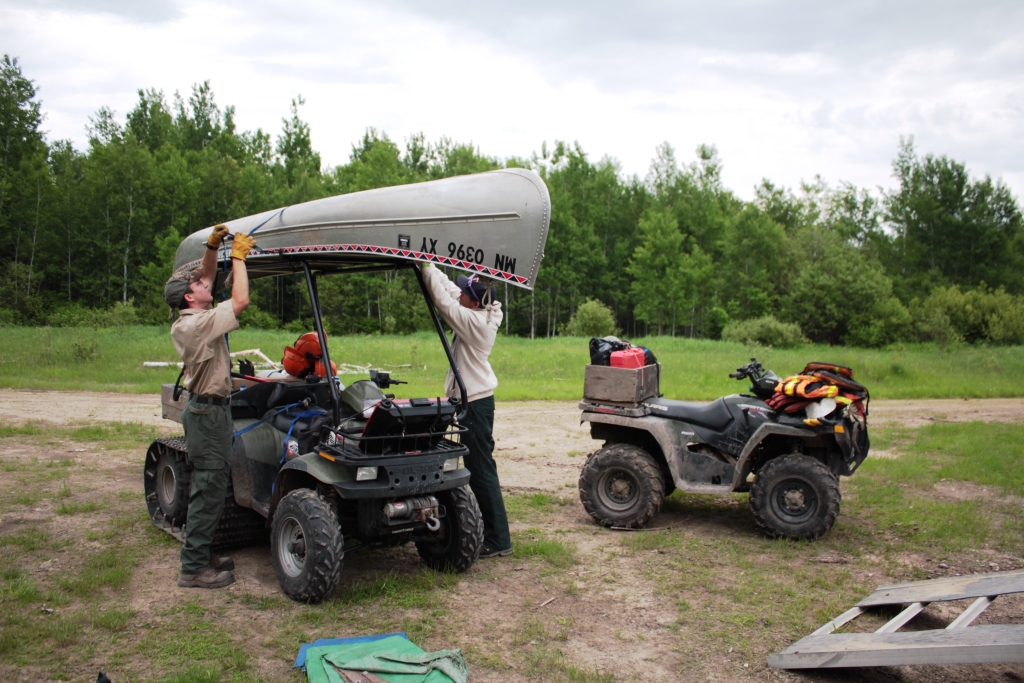Little Fork Blood Drive


By: Sean Fleming
“So you guys are here for the Little Fork blood drive.”
Andrew, our project host, said as he led us back to his office to go over river maps with us.
“The bugs are really bad at this time of year, and the Little Fork is about as remote as anything.”
Our crew was about to begin working on the Little Fork and Vermillion Rivers over the course of an eight day spike trip.
The trip started out rough after Andrew noticed that the bearings were shot on one of our trailer wheels. We were lucky our entire wheel hadn’t fallen off on the drive up to Grand Rapids.
While we waited in the bullpen, another DNR employee walked up to us laughing, “So you guys are going out on the Little Fork?” I was one of the last people in the DNR to take a trip down that river, and that was about ten years ago. I still have nightmares from it. It’s a lot like Deliverance.” He told us that they had tried to run the river in August when the water levels were low. They ended up dragging their jon boat for most of the journey.
After a quick rebuild in the shop we headed to the Little Fork where we began our operations the following day. After two nights at Samuelson County Park, a gorgeous campsite beside rushing rapids, we plunged fully into the wilderness and built two new campsites. The first site we accessed on a seven mile ATV trip through sloughs after we had already driven in several miles on logging roads. From that site, we launched our canoes and paddled another seven miles downriver to the intended site. After fully establishing the campsite the following morning, we paddled out eight miles and then drove to the Vermillion River.

We hiked in Voyageur National Park and the Superior National Forest. We caught enormous small-mouth bass at the base of rapids. We watched and heard what we think were lake sturgeon launching into the air, harvested and sauteed bright orange chicken of the woods, and just as we were driving toward our campsite on Echo Lake, we spotted a large pepper colored creature standing in the side of the road. At first I thought it was an unusually colored deer, until I noticed it’s pointed snout and ears.
“Wolf! Wolf! Look at that wolf!” I yelled.
The wolf darted into the highway and bounded straight at us, its enormous paws swiftly bouncing along the pavement, its orange eyes staring straight through the windshield. It made a quick dash to the side. In a few leaps it vanished into the balsam jungle.
We did all of that, and involuntarily donated copious liters of blood to the mosquitoes that bit our hands and the backs of our necks while we brushed out campsites, dug latrines and fire pits and chainsawed through trees blocking portages. Itchy welts cover my hands and ankles. It felt like a long trip, and looking back, I still can’t believe that it was only a week.
With the completion of that trip, our crew has worked in all of Minnesota’s regions, from the bluffs of the Southeast, to the Minnesota River valley in the southwest, the Mississippi headwaters in the Northwest and finally these two beautiful rivers in the Northeast.